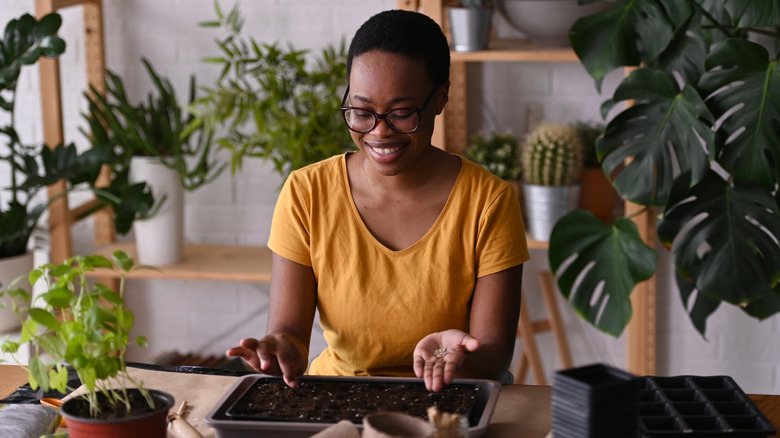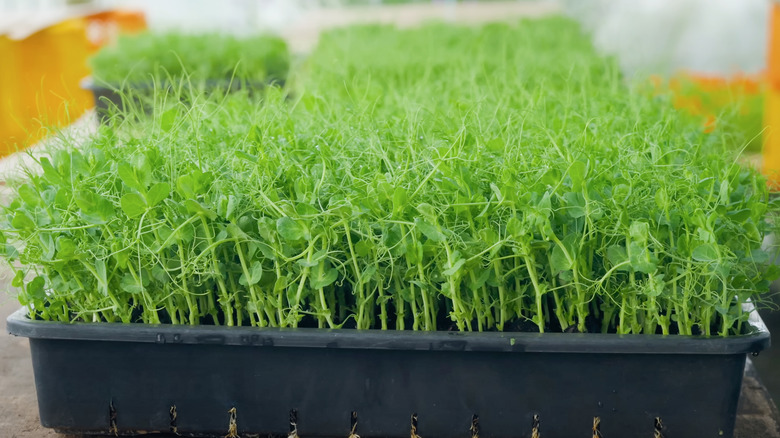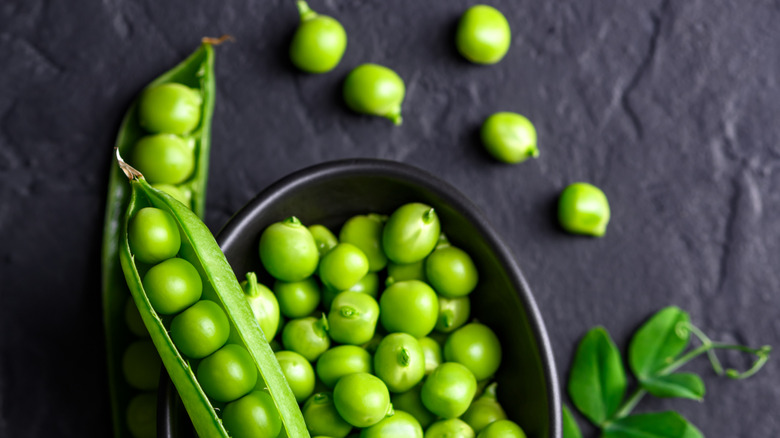The Common Garden Vegetable You Can Actually Grow Indoors In The Winter
We may receive a commission on purchases made from links.
Planning for a long winter without fresh-picked veggies is as old as the seasons. Home cooks have long been canning, drying, or otherwise preserving the bounty that becomes harder to find when the winter freeze descends. If you love to garden, there's another way to keep your supply of vegetables up throughout winters, especially with unpredictable price variations and extreme weather events that affect crops: You can grow your own. It can be very satisfying to watch the germination and development of winter garden vegetables that grow beautifully indoors. You can plant peas (Pisum sativum), a legume suited to the cool seasons, inside over the winter by starting them from seed and giving them plenty of water and light.
Growing peas inside over the chilly months is possible for several reasons. These legumes can pollinate themselves and develop their fruits even without bees buzzing around. They also need plenty of moisture in their soil, and when you're tending to them inside, you can check the soil regularly without stepping into the cold.
In addition to pea seeds, you'll need containers, potting mix, and a source of light for your indoor garden project. You should also be prepared to invest in a grow light if your goal is to have a sizable pea crop. In the winter, the sun from a window might not meet the plant's light requirements.
How to start peas indoors
The first step on your journey to garden-fresh peas in the comfort of your own home is starting the seeds indoors. You can choose between garden peas, which have to be shelled to be eaten, and varieties with edible pods, like sugar snap and snow peas. Since there will usually be less available space in an indoor garden than an outside one, look for seeds of dwarf cultivars. For example, the "Tom Thumb" is a compact type of garden pea that's ideal for growing indoors since it stays under 10 inches tall. If an edible pod is preferred, try "Sugar Sprint," which grows to about 2 feet tall and is known to quickly produce 3-inch snap peas. Having a smaller pea plant eliminates the need to invest in a stake or trellis for support as it grows.
The pea seeds will need 8- to 12-inch deep containers to put down their roots. Since you may need to move them around to find the best light source for your baby veggies, it's a good idea to keep them light and portable. Using what you have at home, like empty yogurt containers you poke a drainage hole in, is a good move for this reason. Fill your containers with a potting mix high in the organic material that helps pea plants thrive, and plant the seeds 1 or 2 inches into the soil. You can sow one seed per individual container if they're small but in larger containers leave 2 inches of space between seeds. Watch for seedlings in about a week, and know that if you're not seeing them sprout within two weeks, you may need to add heat to your setup.
Tips for nurturing and harvesting indoor-grown peas
Lots of light and the right soil moistness will be crucial to a delicious pea harvest. In nature, the plants need at least six hours of light a day but do even better with up to 10 hours of daily sunlight. Get them close to a sunny window or try a light bulb designed to provide similar conditions, like the SANSI Full Spectrum 24W Grow Lamp. Water is something else to monitor, especially in wintertime when the indoor air can dry out. To make sure their roots have the requisite moisture, feel the top of the soil and give the peas a drink when it feels dry.
Over several months, the plant should develop flowers and then pea pods with seeds inside. You can tell if your pea plants are ready to harvest by examining their pods. If they're plump and you can see or feel the peas inside, they're ready to snip off. Pick snap peas when the peas are small but the pods are starting to plump up, and snow peas when the pods are long and flat.


